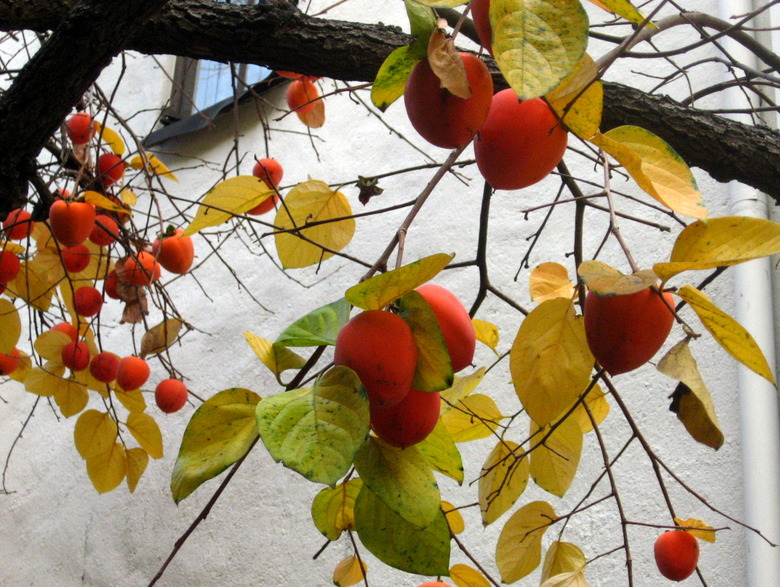How To Care For A Persimmon Tree
Things Needed
- Peat
- Manure
- 10-10-10 fertilizer
- Pruning shears
Tip
Depending on the variety planted, you may need to acquire a second persimmon tree for proper pollination. Pests are generally not a problem with persimmon trees. If you do notice mealy bugs or scale on the tree, treat the persimmon with an insecticide specifically designed to treat that certain pest and that will not harm the tree. Overfertilization and excess watering can cause the fruit and blossoms to drop from the tree early.
Caring for and maintaining a persimmon tree really is not that hard to do, as long as you meet its growing requirements. In fact, it is really an easy-to-grow fruit tree once it is established, with very few problems. Persimmons grow best in regions of our country where the winters are moderate and the summers are mild. Thus, it will do best planted in Zones 7 and above. Depending on the variety, this deciduous tree gives orange-yellow to orange-red fruits during the spring and is a favorite to the local wildlife.
Step 1
Grow your persimmon tree in an area that is well-ventilated, gets full sunlight and is large enough for it to grow. Persimmon trees can reach a height of 25 feet and have a width that is the same. Place your tree in an area where it will get some wind protection, as strong winds can break the delicate limbs.
- Caring for and maintaining a persimmon tree really is not that hard to do, as long as you meet its growing requirements.
- Place your tree in an area where it will get some wind protection, as strong winds can break the delicate limbs.
Step 2
Plant your persimmon tree in soil that drains well and is not too salty. Though the trees are adaptive to many soil conditions, you may have to amend the soil with peat or manure if it is too sandy.
Step 3
Water a newly planted persimmon tree three times per week for the fist few weeks it is in the ground. Though established persimmon trees are pretty drought-tolerant, regular weekly watering will produce tastier and larger fruits, and the tree will grow better. If you live in an area where the soil is moist and heat is not a problem, the tree may only need to be watered every couple weeks.
Step 4
Fertilize the persimmon tree in the early spring and late summer with a high-quality, all-purpose fertilizer. Using a fertilizer marked 10-10-10 should be sufficient. Do not apply too much nitrogen to the persimmon tree, as it can cause the fruits to drop from the tree prematurely.
- Plant your persimmon tree in soil that drains well and is not too salty.
- Though established persimmon trees are pretty drought-tolerant, regular weekly watering will produce tastier and larger fruits, and the tree will grow better.
Step 5
Prune the young persimmon tree once a year to promote stronger limbs and better fruit production. Remove any dead limbs and cut the branches back by one-third. Persimmon trees can be pruned easily to form hedges or screens or just to control their size.
